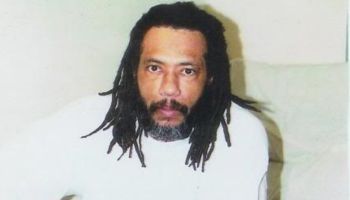RIKUZENTAKATA, Japan – As Japan’s prime minister visited tsunami-ravaged coastal areas for the first time Saturday, frustrated evacuees complained that the government has been too focused on the nuclear crisis that followed the massive wave.
ALSO READ: 16 Job Interview Tips To Put You Ahead Of The Pack
Nearly every day some new problem at the stricken Fukushima Dai-ichi nuclear plant commands officials’ attention — Saturday it was a newly discovered crack in a maintenance pit that is leaking highly radioactive water into the sea.
“The government has been too focused on the Fukushima power plant rather than the tsunami victims. Both deserve attention,” said 35-year-old Megumi Shimanuki, who was visiting her family at a community center converted into a shelter in hard-hit Natori, about 100 miles (160 kilometers) from Rikuzentakata, where Prime Minister Naoto Kan stopped Saturday. More than 165,000 people are still living in shelters.
Kan’s government has been frantically working with Tokyo Electric Power Co. to solve the crisis at the nuclear complex, which has been spewing radioactivity since cooling systems were disabled by the 9.0-magnitude earthquake that preceded the tsunami on March 11.
On Saturday, nuclear safety officials announced that they had found water with levels of radioactive iodine far above the legal limit leaking from an 8-inch (20-centimeter) crack in the maintenance pit into the Pacific Ocean.
They said the crack was likely caused by the quake and may be the source of radioactive iodine that started showing up in the ocean more than a week ago.
People living within 12 miles (20 kilometers) of the plant have been evacuated and the radioactive water will quickly dissipate in the sea, but it was unclear if the leak posed any new danger to workers. People have been uneasy about seafood from the area despite official reassurances that the risk of contamination is low.
The cracked pit houses cables for one of the six nuclear reactors, and the concentration of radioactive iodine was the same as in a puddle of contaminated water found outside the reactor earlier in the week. Because of that, officials believe the contaminated water is coming from the same place, though they are not sure where.
A nuclear plant worker who fell into the ocean Friday while trying to board a barge carrying water to help cool the plant did not show any immediate signs of being exposed to unsafe levels of radiation, nuclear safety officials said Saturday, but they were waiting for test results to be sure.
Radiation worries have compounded the misery for people trying to recover from the tsunami. Nearly 25,000 are feared dead — 11,800 confirmed — and in addition to those living in shelters, tens of thousands more still do not have electricity or running water.
Kan’s visit Saturday to Rikuzentakata was his first to survey damage in one of the dozens of villages, towns and cities slammed by the tsunami.
“The government fully supports you until the end,” Kan told 250 people at an elementary school serving as an evacuation center. He earlier met with the mayor, whose 38-year-old wife was swept away.
He bowed his head for a moment of silence in front of the town hall, one of the few buildings still standing, though its windows are blown out and metal and debris sit tangled out front.
Kan also stopped at the sports complex being used as a base camp for nuclear plant workers, who have been hailed as heroes for laboring in dangerous conditions. He had visited the nuclear crisis zone once before, soon after the quake.
Workers have been reluctant to talk to the media about what they are experiencing, but one who spent several days at the plant described difficult conditions in an anonymous interview published Saturday in the national Mainichi newspaper.
When he was called in mid-March to help restore power at the plant, he said he did not tell his family because he did not want them to worry. But he did tell a friend to notify his parents if he did not return in two weeks.
“I feel very strongly that there is nobody but us to do this job, and we cannot go home until we finish the work,” he said.
Early on, the company ran out of full radiation suits, forcing workers to create improvised versions of items such as nylon booties they were supposed to pull over their shoes.
“But we only put something like plastic garbage bags you can buy at a convenience store and sealed them with masking tape,” he said.
He said the tsunami littered the area around the plant with dead fish and sharks, and the quake opened holes in the ground that tripped up some workers who could not see through large gas masks. They had to yell at one another to be heard through the masks.
“It’s hard to move while wearing a gas mask,” he said. “While working, the gas mask came off several times. Maybe I must have inhaled much radiation.”
Radiation is also a concern for people living around the plant. In the city of Koriyama, Tadashi and Ritsuko Yanai and their 1-month-old baby have spent the past three weeks in a sports arena converted into a shelter. Baby Kaon, born a week before the quake, has grown accustomed to life there, including frequent radiation screenings, but his parents have not. Their home is fine, but they had to leave because it is six miles (10 kilometers) from the nuclear plant.
Asked if he had anything he would like to say to the prime minister, the 32-year-old father paused to think and then replied: “We want to go home. That’s all, we just want to go home.”
In Natori, where about 1,700 people are living in shelters, others had stronger words for Kan. Toru Sato, 57, lost both his wife and his house in the tsunami and said he was bothered that Kan’s visit to the quake zone was so brief — about a half day.
“He’s just showing up for an appearance,” Sato said. “He should spend time to talk to various people, and listen to what they need.”
RELATED:
















